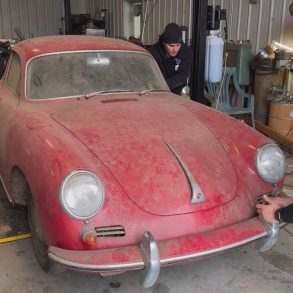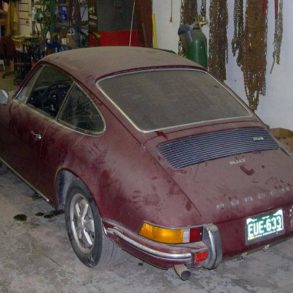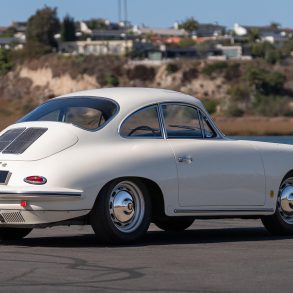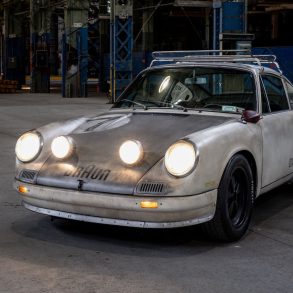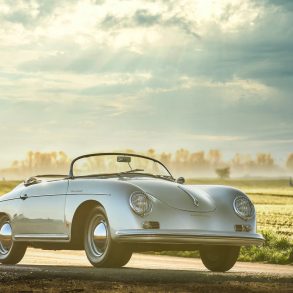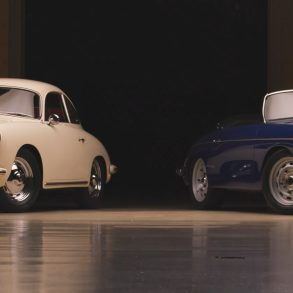Episode Three: The Porsche 911 T, 911 L, & 911 S Summary
Welcome to The Audiobahn, the Stuttcars.com podcast focused on all things Porsche. In our first series, we’re exploring the history of venerable 911: its history, origins, achievements, and future.
Audiobahn Episode Three is all about the Porsche 911 T, 911 L, and 911 S. The introduction of the 911 was very successful. Quickly Porsche wanted to move the new model into its three power tier system.
Read the Podcast Transcript
B: Welcome to the Audiobahn. I’m Brayden, this is Chris. We are your hosts. We are the Porsche podcast. We dive deep into the articles written on stuttcars.com and we bring you really deep insights into the history of Porsche.
In this series we’re looking at the history of the 911. All the way back to the 356 and all the way to the present. So in the past few episodes we’ve gone through the 356, the 901, the initial 911 and the 912. And in this episode, we’re going to touch on the next evolution of the Porsche.
So Chris, are you ready?
C: I’m ready, are you ready Braden?
B: I’m ready. Let’s go.
B: Okay Chris, what are we talking about this week?
C: Today we’re talking about the 911 T, the 911 L and the 911 S.
B: Perfect, why?
C: Because we have to, for a lot of different reasons. If we’re going to be talking about 911s, we can just say oh great the 911 it’s a car, it’s this wonderful base that they can make these really cool things. That’s great, but very rarely can the history of a car be described as “yes this car existed for this amount of years”. It doesn’t actually do anything for us, so instead talking about the variations within that model is wildly important to understanding actually what that model even did.
So the 911 is a cultural touch point for so many people and it changes everything about a lot of things, but it changes those in the way that Porsche structured it. So we have to look at the structure of what they did with the 911. The thing that they did was they turned the 911 to, after coming out with it, which was extremely successful by the way, they turned their focus to making the 911 fit into their three-tier power system.
B: This is almost a power system that it had back at the 356.
C: Yeah you got it.
B: With A, B and C.
C: Yeah but even beyond just the A B C, because if you remember in the C models, there were the three different engine options; there was the 1600, there was a super 1600 and or the 1600s, and then there was the Super 90 engine. So it had the three separate power models within that sub model of the C.
What happens with the 911 is the 911 has been the same thing, it has three separate power options essentially, if we exclude the R, which we are doing by the way for this episode.
B: We’re gonna be touching on the R next week.
C: We’re talking about a movement away from what they did with the 912. When we were talking about the 912, we said “well the 911 is this upgraded thing; it’s more expensive, so we need to bridge the gap”, the expense of that. So they make the 912, which is going to be lower powered and all that. They then take the 912, it does its job and they turn it into the 911 T. You got it.
B: Let’s go over some quick stats about that 911T. It had a 2.0 litre engine, generating 110 brake horsepower at 4200 RPM, and generating 130 foot-pounds of torque, all leading to a top speed of 110 miles per hour and a 0-60 of 8.3 seconds.
C: A really cool car.
B: It’s a beautiful car.
C: Also bog standard, bottom of the barrel, 911. Which is still really cool. The 911 T was the replacement for the 912. So the 912 came in and bridged a gap between the cost of a new 911 and you know getting into a 911. Right. And it did that job very very well, but at some point the 912 had to change because it was still running on that four cylinder from the 356.
So what they did of course was they took out that engine and they put in the flat six that we all know and love. A little bit different than the standard 911. Instead of having aluminium heads, it had cast iron heads. So it’s a little bit heavier, a little bit less flow, which is why it only had 130 horsepower, as opposed to the 911 L.
B: Now let’s look at the stats for the 911 L. This had the same two litre engine, but this one generated 130 brake horsepower and 119 pound-feet of torque, this led it to a fantastic top speed of 130 miles per hour and the same 0 to 60 of 8.3 seconds.
C: Yeah but still a more responsive engine. Because of just a few changes, right, 130 horsepower. That 20 extra horsepower is still being felt, but yeah you’re right, the 911 L replaces, kind of the the standard 911 or it is the standard 911. It doesn’t replace anything, they just tack an L on to the name. So it already had the Weber carbs, they already had all these same internals and it was already making 130 horsepower. So the T is kind of more the variant on it, but the 911 L becomes the standard 911 that we have going across. And that’s great.
But then the cool one, the really really cool one, comes out of here, and that’s the 911 S.
B: So let’s look at the stats of the 911 S. So this was the same 2-litre engine, but this time it’s generating a 160 brake horsepower at 66 RPM and a whopping 132 pound-feet of torque, which leads us to a significantly faster top speed and a better acceleration of 141 miles per hour and 7.4 second 0 to 60.
C: It’s significant.
B: A machine.
C: It’s amazing. It is significantly different than the 911 L. They go into that engine and they change a lot of things about it. The carbs remain the same but the head changes, it has bigger valve ports, the crankshaft is running different. It’s running at different intervals. The crankshaft is nitrated, so it’s stronger. The Pistons are forged, so they’re stronger and the crankshaft changes as well basically they took took the block of the engine and they said everything inside this must go and they rip it all out and they put in nothing but better stuff. So it produces way more power and oh man the 911 S is cool. And what we see here now is that, what Porsche has done is they’ve taken this car and they’ve put it into their three-tier power system, right, they have the 911 T, which is the lowest power, the 911 L, which is the mid power, and then they have the 911 S, which is their top power. Which is the same as what they had with the 356. Because the 356 C, they had the three different engine options as well. So now Porsche has what they had with the 356, just on a way better, more potential, right. Unibody frame.
B: And you made a really good point when we were talking earlier that the T is obviously the lovely transition out from the 912. The 911 L is just the straight down the middle 911, but the S is where they start to turn it into a playground, where they’re like all right let’s see what we can what we can do to push this platform to the next level. So that’s really exciting.
C: You got it.
B: Cool.
B: Okay Chris, why do we care about all of this?
C: Well I think this shows the importance of engineering. I feel like I’ve said that a few times this series, but I think that’s Porsche’s calling card. This shows how big of a difference an engine can make.
The body is exactly the same with all these cars. It’s the same unibody design. The wheels kind of change; they go to the fuchs wheels, like those those really stylish five prong Wheels right. The five spoke wheels. The bodies are exactly the same. Everything weighs the same. Everything’s moving the same. The only difference is the engine.
So we’ve talked about the T, how it has a bit of a heavier engine, a little bit less flow. The L, that’s a little bit better. But the S with its complete overhaul of its internals, making way more power, making it go way faster. Now it’s the same block and if you compare the L to the S block and you know with their with their internals, the L gets an 8.6 to 1 compression ratio with what it has here, which is yeah it’s fine for the year. That’s all right. But the S has a 9.8 to 1 compression ratio and the only difference is the internals. The crankshaft is just that different, and the camshaft is that different and they take advantage of all of it. So you know this great article online said that well you know it may not look like much on paper it created an absolute screamer of an engine. I think nothing does that more Justice than calling it that. That’s the difference between these three cars, it’s only the engine. And Engineers, like you said, turning it into a playground and making the engine that they wanted to make.
And of course, people won’t just take notice, people work on them themselves and start to Hot Rod them and Porsche also does that and that’s when the 911 gets into racing. It is almost immediately picked up and started to be changed and modified for racing and that’s what we’re going to talk about next week.
B: With the 911 R. Brilliant.
Okay, so that’s what we talked about this week. Next week we’re going to be touching on the 911 R.
Guys, thank you so much for coming and hanging out with us. If you want to read any more amazing articles about Porsche, go head over to stuttcars.com and there’s just a plethora of well researched articles to read through. You won’t get bored and you won’t regret it. Thanks for joining us, we’ll talk to you next week. Bye.


